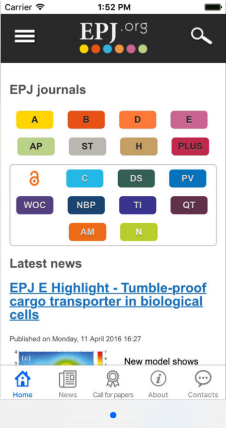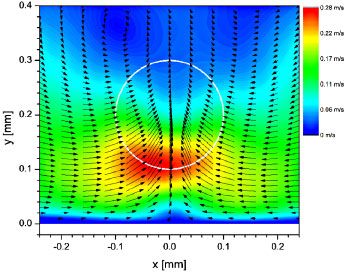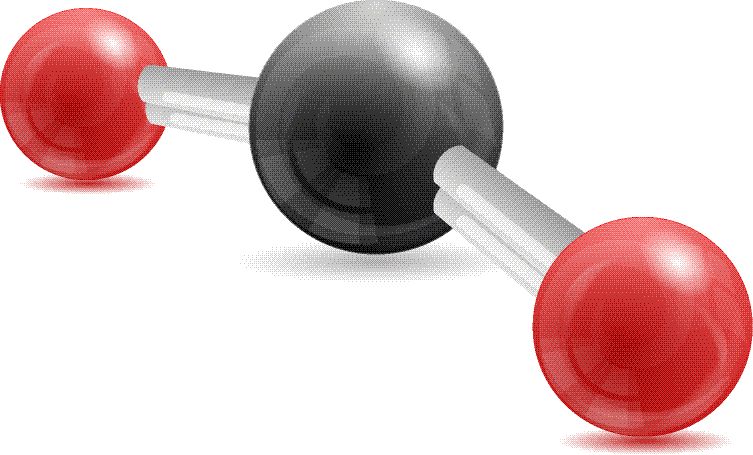News
EPJ D Highlight - Revisiting trajectories at the quantum scale
- Details
- Published on 07 June 2016

The role of statistics in quantum scale observation explains microscale behaviour
There is a gap in the theory explaining what is happening at the macroscopic scale, in the realm of our everyday lives, and at the quantum level, at microscopic scale. In this paper published in EPJ D, Holger Hofmann from the Graduate School of Advanced Sciences of Matter at Hiroshima University, Japan, reveals that the assumption that quantum particles move because they follow a precise trajectory over time has to be called into question. Instead, he claims that the notion of trajectory is a dogmatic bias inherited from our interpretation of everyday experience at the macroscopic scale. The paper shows that trajectories only emerge at the macroscopic limit, as we can neglect the complex statistics of quantum correlations in cases of low precision.
EPJ A Highlight - New approach to nuclear structure, freely available
- Details
- Published on 01 June 2016

Use of relative coordinates in nuclear structure calculations helps reduce the amount of computational power required
The atomic nucleus is highly complex. This complexity partly stems from the nuclear interactions in atomic nuclei, which induce strong correlations between the elementary particles, or nucleons, that constitute the heart of the atom. The trouble is that understanding this complexity often requires a tremendous amount of computational power. In a new study published in EPJ A, Susanna Liebig from Forschungszentrum Jülich, Germany, and colleagues propose a new approach to nuclear structure calculations. The results are freely available to the nuclear physicists’ community so that other groups can perform their own nuclear structure calculations, even if they have only limited computational resources.
EPJ E Colloquium: nanoparticles, nanorods and nanosheets at fluid interfaces
- Details
- Published on 30 May 2016

In this EPJ E Review, Toor, Feng and Russel present many examples of self-assembly of nanoscale materials (both synthetic and biological) such as nanoparticles, nanorods and nanosheets at liquid/liquid interfaces. For biological nanoparticles, the nanoparticle assembly at fluid interfaces provide a simple route for directing nanoparticles into 2-D or 3-D constructs with hierarchical ordering.
EPJ.org Mobile App available
- Details
- Published on 26 May 2016

EDP Sciences launches EPJ.org mobile app. Available and free to download from the iTunes App Store and from Google Play (for Android devices).

Keep up with the latest research in the physical sciences with the EPJ Journals app. The app offers a news sections with lay summaries highlighting the findings reported in selected research papers, updates on the journals contents as soon as they are published, including research papers, reviews, colloquia and proceedings papers from all European Physical Journals (http://www.epj.org). You can search to find specific papers, navigate the journals contents by issue and find out about active calls for papers.
Note: if you are accessing through a mobile device connected through your institutional VPN, you will be able to access the full text PDFs if your institution has a subscription to the journals. Some of the EPJ journals are published in Open Access so they are fully accessible to anyone, from anywhere.
Download EPJ.org App now!
EPJ A Managing Editor Reviews Ulf-G. Meißner receives 2016 Lise Meitner Prize
- Details
- Published on 25 May 2016

The Nuclear Physics Division of the EPS awards the prestigious Lise Meitner Prize every alternate year to one or several individuals for outstanding work in the fields of experimental, theoretical or applied nuclear science. Professor Ulf-G.Meißner, Universität Bonn and Forschungszentrum Jülich, Germany, Managing Editor for Reviews and former Editor-in-Chief of EPJ A, receives the 2016 Lise Meitner Prize “for his developments and applications of effective field theories in hadron and nuclear physics, that allowed for systematic and precise investigations of the structure and dynamics of nucleons and nuclei based on Quantum Chromodynamics”.
EPJ E Highlight - Travelling wave drives magnetic particles
- Details
- Published on 18 May 2016

New method for selectively controlling the motion of multiple sized microspheres suspended in water
As our technology downsizes, scientists often operate in microscopic-scale jungles, where modern-day explorers develop new methods for transporting microscopic objects of different sizes across non uniform environments, without losing them. Now, Pietro Tierno and Arthur Straube from the University of Barcelona, Spain, have developed a new method for selectively controlling, via a change in magnetic field, the aggregation or disaggregation of magnetically interacting particles of two distinct sizes in suspension in a liquid. Previous studies only focused on one particle size. These results, just published in EPJ E, show that it is possible to build long chains of large particles suspended in a liquid, forming channels that drive the small particles to move along. This could be helpful, for example, when sorting magnetic beads by size, separating biological or chemical entities in lab-on-a-chip devices or transporting biological species to analyse them.
EPJ D Highlight - How repeated spot microdischarges damage microdevices
- Details
- Published on 18 May 2016

New study blames temperature increase on locally reoccurring discharges in microelectronic devices
In microelectronics, devices made up of two electrodes separated by an insulating barrier are subject to multiple of microdischarges—referred to as microfilaments—at the same spot. These stem from residual excited atoms and ions from within the material, the surface charge deposited on the insulating part of the device, and local temperature build-up. These reoccurences can lead to the creation of pin-holes in the material of the microelectronic devices where they occur, and are due to local reductions in the electric field. Now, Jozef Ráhel and colleagues from Masaryk University in the Czech Republic have elucidated the mechanism of microdischarge reoccurrence, by attributing it to the temperature increase in a single microdischarge. These results were recently published in EPJ D.
EPJ D Highlight - Bending hot molecules
- Details
- Published on 17 May 2016

New model for controlling hot molecules reactions, which are relevant to fusion, space exploration and planetary science
Hot molecules, which are found in extreme environments such as the edges of fusion reactors, are much more reactive than those used to understand reaction studies at ambient temperature. Detailed knowledge of their reactions is not only relevant to modelling nuclear fusion devices; it is also crucial in simulating the reaction that takes place on a spacecraft’s heat shield at the moment when it re-enters Earth’s atmosphere. Further, it can help us understand the physics and chemistry of planetary atmospheres. In a novel and comprehensive study just published in EPJ D, Masamitsu Hoshino from Sophia University, Tokyo, Japan, and colleagues reveal a method for controlling the likelihood that these reactions between electrons and hot molecules occur, by altering the degree of bending the linear molecules, modulated by reaching precisely defined temperatures.
EPJ Plus Highlight - You were right: rotational motion is relative, too, Mr Einstein!
- Details
- Published on 11 May 2016

Extension of the relativity theory to rotational motion, one hundred years after Einstein first published the general theory of relativity
It has been one hundred years since the publication of Einstein’s general theory of relativity in May 1916. In a paper recently published in EPJ Plus, Norwegian physicist Øyvind Grøn from the Oslo and Akershus University College of Applied Sciences and his co-author Torkild Jemterud demonstrate that the rotational motion in the universe is also subject to the theory of relativity.
EPJ A Highlight - Nuclear physics’ interdisciplinary progress
- Details
- Published on 10 May 2016

Theoretical nuclear physics could yield unique insights by extending methods and observations from other research fields
The theoretical view of the structure of the atom nucleus is not carved in stone. Particularly, nuclear physics research could benefit from approaches found in other fields of physics. Reflections on these aspects were just released in a new type of rapid publications in the new Letters section of EPJ A, which provides a forum for the concise expression of more personal opinions on important scientific matters in the field. In a Letter to the EPJ A Editor, Pier Francesco Bortignon and Ricardo A. Broglia from the University of Milan, Italy, use, among others, the example of superconductivity to explain how nuclear physics can extend physical concepts originally developed in solid state physics.






